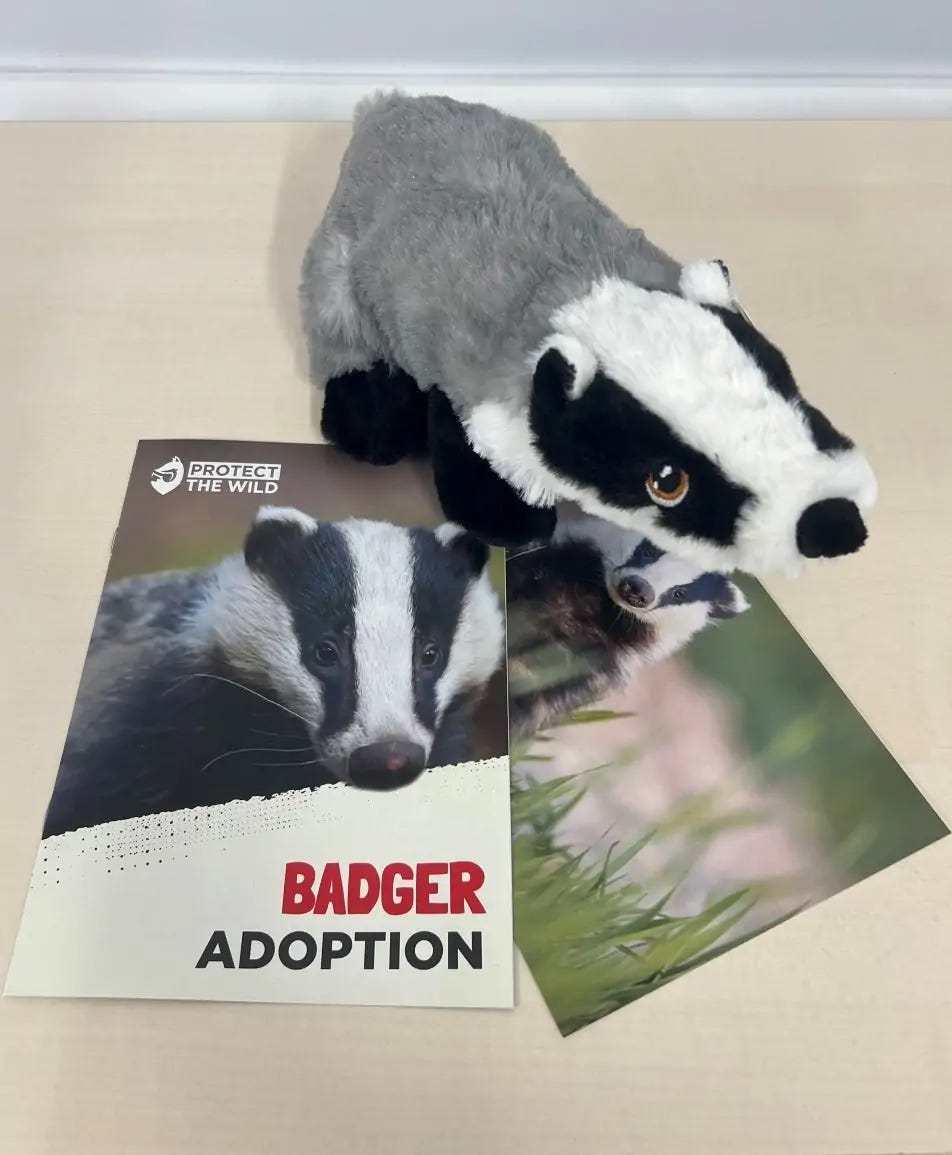Government condemns 10,000 more badgers while decrying nature crisisVeterinarian Iain McGill describes removing badgers as "environmental hooliganism."
When the Labour Party was elected earlier this year, many people concerned about the nature crisis hoped the change of governance would mean an end to England's badger cull. After all, the party branded the now over a decade-long massacre of badgers as "ineffective" in its manifesto and pledged to end the cull. These hopes were dashed as it became apparent that the new government actually intended to continue the killing, possibly up to 2029.Recently, this betrayal of the public, badgers, and the natural world, was confirmed once more when the government published figures for 2024's intensive badger culls. On 16 October, the Department for Environment, Food and Rural Affairs (DEFRA) revealed that the cull licensing authority – Natural England – authorised licences which allowed for the killing of over 10,000 badgers in intensive culls this year. Without a shred of irony, government ministers, including the DEFRA secretary Steve Reed, then spoke out about the biodiversity crisis and how vital it is for nature to be put "on the road to recovery" just days after the figures were published. As the Badger Trust highlighted, the government also recently appointed a Special Representative for Nature, in what officials called a "landmark first." The Badger Trust's chief executive, Peter Hambly, called for Reed and the new nature representative, Ruth Davis, to "explain how continuing to kill tens of thousands of badgers right now helps their plans for nature." Quite. Over 38,000 badgers marked for death in 2024Rounds of intensive culling begin in September each year, with supplementary cull periods starting in June. Supplementary culls take place in areas where badgers have already endured an intensive cull, which typically last four years. This means that some of the rounds of killing in 2024 began prior to the Labour government being elected, with others starting after. In a shock move revealed in August, the government has also approved a cull in Cumbria. This cull differs from the other intensive culls for which figures were recently revealed as it is an entirely new cull, rather than an authorisation of culls that were first licensed under the previous Conservative government. The combined intensive and supplementary culls for 2024 amount to the permitted slaughter of over 37,000 badgers. This figure represents the maximum number of badgers that cull companies are licensed to kill. The actual number of deaths this year will not be known until the government publishes the relevant figures on how many badgers the companies succeeded in killing. These 2024 figures are in addition to the over 230,000 badgers that had been killed under the cull policy by the end of 2023. Some welcome changesAlthough the Labour government is falling far short of expectations on the badger cull, it has announced some welcome changes to the status quo. For instance, the government scrapped a plan for the future 'targeted' culling of badgers laid out by its predecessor. This plan would have involved further potentially large-scale killing of the iconic mammal. DEFRA also announced that work had begun on a "new TB eradication strategy" in late August. Since it began in 2013, the badger cull has been part of the strategy for tackling bovine tuberculosis (bTB) in cows, based on the idea that badgers play a significant role in the spread of the disease in herds. A burgeoning body of evidence, however, points to badgers having little to do with the spread of the disease among cows. Rather, this evidence shows that cow-focused measures, such as increased testing for the disease and better biosecurity, are key to tackling bTB. As part of its new bTB eradication strategy, DEFRA said it will develop a "national wildlife surveillance programme" that will "provide an up-to-date understanding of disease" in badgers and other wild animals. As the department conceded, the level of bTB in remaining badgers "is largely unknown." Indeed, the level of bTB in the hundreds of thousands of badgers that have been slaughtered to date is also unknown to because the previous government chose not to routinely test them as part of the policy. Environmental hooliganism won't put nature on the road to recoveryDEFRA has also said it will carry out a badger population survey within the new strategy. A major survey of the species' population hasn't happened since the cull began, leaving policymakers with "no clear idea of the impact culling techniques have on our badger populations," DEFRA said. Just as the impact of the cull on badger populations is unknown, the impact of the slaughter on England's wider ecosystems is largely unknown. However, a 2011 evaluation by the Food and Environment Research Agency (Fera), now called Fera Science, found that manipulating the populations of carnivores like badgers could have “significant effects on the structure of ecological communities” and “wider knock‐on consequences for the ecology of other species and communities.” As veterinarian Iain McGill has put it, removing badgers is "a very stupid thing to do if you’re trying to conserve biodiversity. It’s just a crass hooliganism. It’s environmental hooliganism." If the government is serious about restoring wildlife and putting nature on the road to recovery, this environmental hooliganism must end.ADOPT A BADGER AND SUPPORT US FURTHERAt Protect the Wild we are campaigning against badger persecution and the ongoing badger cull. By adopting a badger with Protect the Wild you will help fund our efforts to protect badgers and help expose wildlife crimes committed against wild badger populations. As an adopter, not only will you be helping fund vital work, but you will also receive an exclusive Protect the Wild adoption pack including cuddly toy, glossy photo, and an information fact sheet. |




No comments:
Post a Comment